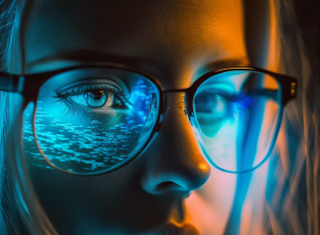Understanding Blue Light Filter Glasses
Blue light filter glasses are marketed as a means to mitigate the potential negative impacts of blue light exposure from digital screens. Proponents claim that these lenses can help reduce eye strain, improve sleep quality, and even prevent or slow down the progression of myopia in children.
The Myth Debunked: Lack of Scientific Evidence
Contrary to popular belief, scientific evidence supporting the efficacy of blue light filter glasses specifically in managing myopia among children is sparse and inconclusive. Several key points should be considered:
- Insufficient Research: Rigorous scientific studies examining the direct effect of blue light filter glasses on slowing myopia progression in children are limited. Existing research lacks robust evidence to firmly establish their effectiveness for this purpose.
- Focus on Other Factors: Myopia development and progression are multifactorial, influenced by genetics, lifestyle, and environmental factors. While blue light from screens may contribute to eye strain, its direct impact on myopia progression remains unclear.
- General Eye Comfort: Blue light filter glasses may offer some comfort by reducing glare and eye strain during screen use. However, this does not necessarily translate to a significant impact on myopia development or progression.
Common Display Settings to Reduce Blue Light
- Night Mode or Blue Light Filter: Many devices offer a night mode or blue light filter setting that can be activated manually or scheduled to turn on automatically during specific times of the day. This feature adjusts the color temperature of the screen to emit warmer, reddish hues, thereby reducing the amount of blue light emitted.
- Brightness Control: Lowering the brightness of the screen, especially during nighttime use, can also help reduce the intensity of blue light emitted. Dimming the screen reduces overall light emission, which can be less harsh on the eyes.
- Third-Party Apps and Software: Various third-party apps or software applications are available that can be installed on devices to adjust the color temperature of the screen and reduce blue light emission. These apps often offer customization options for users to tailor settings according to their preferences.
Alternative Strategies for Managing Myopia
Instead of relying solely on blue light filter glasses, adopting a holistic approach to managing myopia in children is advisable:
- Regular Eye Exams: Schedule routine eye check-ups for children to monitor their vision and detect any changes early on.
- Limit Screen Time: Encourage balanced screen use and incorporate breaks to reduce eye fatigue, regardless of whether wearing blue light filter glasses.
- Outdoor Activities: Promote outdoor activities to increase exposure to natural light, which has shown potential benefits in reducing myopia risk.
- Corrective Measures: Consider prescribed eyeglasses or contact lenses by eye care professionals to address vision issues associated with myopia.
Making Informed Choices for Children's Eye Health
While blue light filter glasses may provide comfort during screen time, their direct efficacy in managing or preventing myopia in children lacks substantial scientific backing. Opting for a well-rounded approach that includes regular eye check-ups, limited screen time, outdoor activities, and professional guidance remains key in safeguarding children's eye health.
It's crucial to consult with eye care professionals for personalized advice tailored to children's specific vision needs. By making informed choices and focusing on comprehensive eye care strategies, parents and caregivers can best support children's eye health and well-being in the digital era.




Post a Comment
Post a Comment